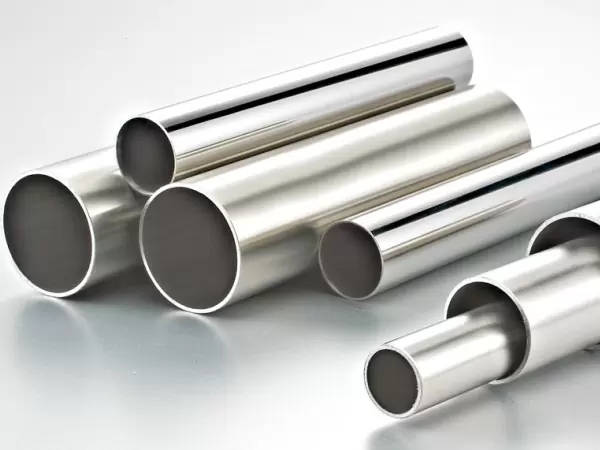
303 stainless steel is an austenitic chromium-nickel stainless steel that is known for its corrosion resistance and ease of fabrication. This grade of steel is non-magnetic and can be heat treated to increase its strength and hardness. 303 stainless steel is often used in applications where parts need to be welded or formed, such as in the food and beverage industry.
What is the chemical composition of 303 stainless steel?
C :≤0.15%
Si :≤1.00%
Mn :≤2.00%
P :≤0.20%
S :≤ 0.75%
Cr :17.00-19.00(%)
Ni :8.00-10.00(%)
Mo :≤0.6%
What are the mechanical properties of 303 stainless steel?
Tensile strength σb (MPa):≥520
Conditional yield strength σ0.2 (MPa):≥205
Elongation δ5 (%):≥40
Reduction of area ψ (%):≥50
Hardness: HB≤187HB; HRC≤90HRB; HV≤200HV
What are the uses of 303 Stainless steel?
303 stainless steel is a versatile material that can be used in a variety of applications. Some of the most common uses for 303 stainless steel include:
-Automotive parts and components
-Cookware
-Food processing equipment
-Architectural trim and molding
-Chemical processing equipment
What is the melting point of 303 stainless steel?
303 stainless steel is a free-machining grade of 304 that has sulfur added to increase its machinability. It is the most freely machinable austenitic stainless steel, and is used in a wide variety of products requiring corrosion resistance and good mechanical properties.
The melting point of 303 stainless steel is 1,930°F (1,049°C).
What are the different grades of 303 Stainless Steel?
There are three grades of 303 stainless steel, each with different properties and applications. The most common grade is 303 Annealed, which is a soft, ductile, and easily machinable austenitic stainless steel. The other grades are 303 Tempered, which is a harder, more durable martensitic stainless steel; and 303 Full Hard, which is the hardest, most brittle martensitic stainless steel.
What are the properties of 303 stainless steel?
303 stainless steel is a austenitic chromium-nickel steel with improved machinability due to the addition of sulfur. It is the most widely used of all the stainless steels and has been employed in a wide variety of end uses, including food processing equipment, architectural trim, and automotive parts. The high sulfur content also gives it enhanced corrosion resistance properties.
What are the benefits of 303 stainless steel?
303 stainless steel is an austenitic chromium-nickel steel with improved machinability due to the addition of sulfur. It is the most free-machining stainless steel available, but its corrosion resistance and physical properties are slightly lower than those of 304 stainless steel.
The benefits of 303 stainless steel include its ease of machining, overall corrosion resistance, good strength and durability. As a result, it is often used in aircraft parts, valves, gears and fasteners.
How to Use 303 Stainless Steel?
303 stainless steel is a free-machining grade of 304 that has sulfur added to increase its machinability. It is widely used in food processing, chemical equipment, and architectural applications. Because of its high degree of machinability, 303 is often used in place of more expensive grades of stainless steel, such as 304 or 316.
To fabricate 303 stainless steel, you will need to use tools designed for working with austenitic steels. These include tungsten-carbide tipped drill bits and end mills. When cutting or drilling this material, it is important to use copious amounts of coolant to prevent heat buildup. Austenitic steels like 303 are also susceptible to work hardening, so it is important to take light cuts when machining this material.
What is the manufacturing process of 303 stainless steel?
The 303 stainless steel manufacturing process is quite simple. It starts with melting the steel in an electric arc furnace. This is followed by adding chrome and nickel to the melted steel to form an alloy. The next step is to cast the alloy into ingots or billets. From there, the ingots or billets are further rolled into thin sheets, strips, or coils.And because of that higher carbon content, 303 can be heat treated to make it even more resistant to corrosion.
What are the differences Between 303 and 304 Stainless Steel?
304 is more cost-effective.
304 stainless steel has excellent resistance to grain boundary corrosion after welding or stress relief; it can also maintain good corrosion resistance without heat treatment.
304 stainless steel plate has a smooth surface, high plasticity, toughness and mechanical strength, and is resistant to corrosion by acids, alkaline gases, solutions and other media. It is an alloy steel that is not easy to rust, but it is not absolutely rust-free.
The carbon content of 303 stainless steel is about: ≤0.15%
The carbon content of 304 stainless steel is about: ≤0.08%
The sulfur content of 303 stainless steel is also much higher than that of 304 stainless steel, and the high sulfur content makes it easier to cut.
303 stainless steel has improved cutting performance and high temperature bonding performance. Best for automatic lathes, bolts and nuts
304 stainless steel is a versatile stainless steel material, and its anti-rust performance is stronger than that of 200 series stainless steel materials. High temperature resistance is also better, can be as high as 1000-1200 degrees.
What are the differences Between 303 and 303se Stainless Steel?
There are a few key differences between 303 and 303se stainless steel. For one, 303se has slightly higher chromium and nickel content than 303 stainless steel. This gives it better corrosion resistance, particularly against pitting and crevice corrosion. Additionally, 303se has sulfur added to its composition, which improves its machinability but can also make it more susceptible to weld brittleness. Finally, the difference in carbon content between the two grades of stainless steel is worth mentioning; 303 stainless steel has a higher carbon content (0.08%) than 303se (0.03%), which can affect both weldability and formability.

